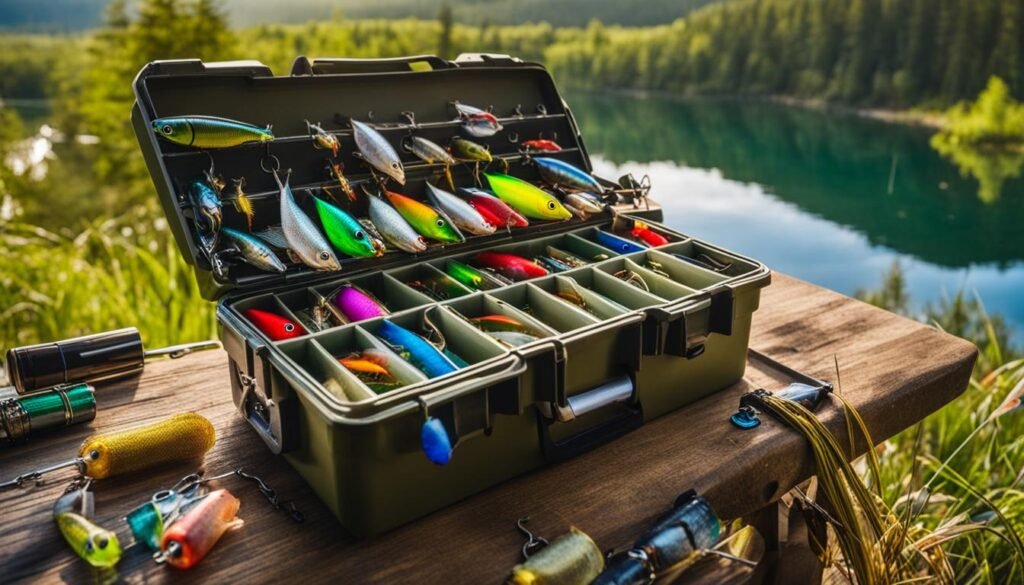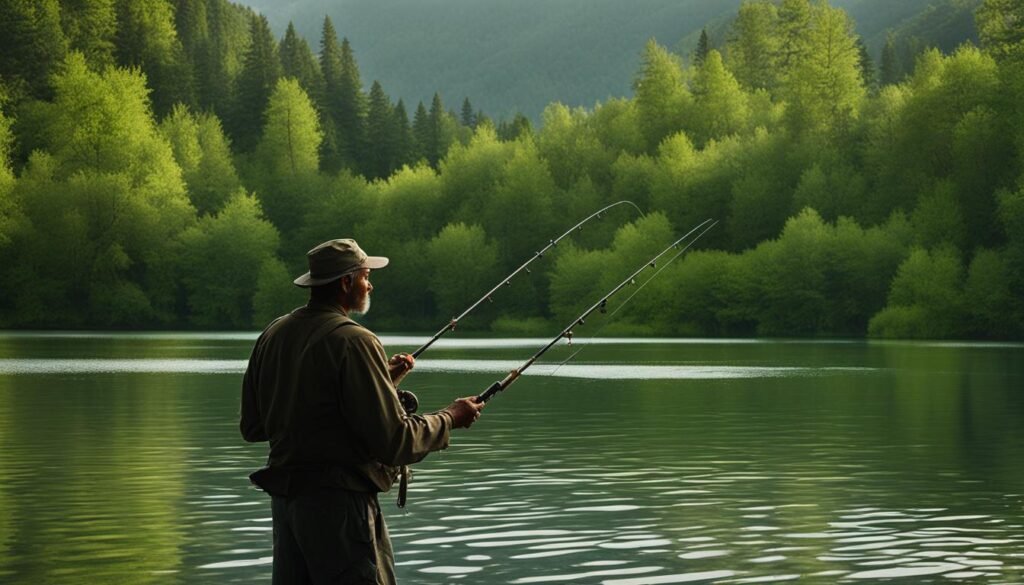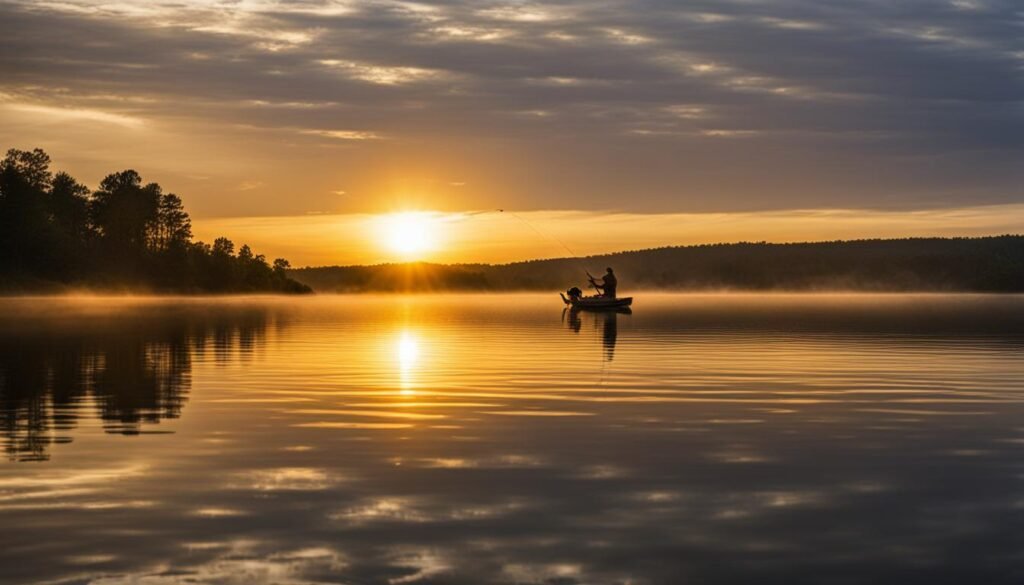Welcome to the exciting world of bass fishing! Whether you’re a complete newbie or have dabbled in fishing before, this article is here to guide you through the fundamental techniques that will help you become a successful angler. By learning essential bass fishing tips, techniques, and strategies, you’ll be well-equipped to catch those elusive bass and create memorable fishing experiences.
The Basics of Fishing Tackle
Understanding the basics of fishing tackle is crucial for beginners. When it comes to bass fishing, selecting the right gear can make a significant difference in your success on the water. Let’s dive into the essential components of fishing tackle that every aspiring angler should know.
1. Hooks
Choosing the right hook is key to effectively hooking and landing bass. There are various hook styles and sizes available, each designed for specific fishing situations. For bass fishing, you’ll typically want to use hooks in the 3/0 to 5/0 range. These larger sizes provide excellent holding power when targeting bass.
2. Fishing Lines
The fishing line is your direct connection to the fish, so selecting the right strength and type is essential. For bass fishing, monofilament and fluorocarbon lines are commonly used due to their strength and versatility. It’s recommended to use line with a test strength between 10-20 pounds, depending on the size of bass you’re targeting.
3. Sinkers
Sinkers, also known as weights, are used to add weight to your fishing setup and sink your bait to the desired depth. Different types of sinkers, such as bullet weights and split shots, offer varying levels of weight and are suitable for different fishing conditions. Experiment with different sinker sizes to find the right balance for your bass fishing techniques.
4. Bobbers
Bobbers, also called floats, are invaluable tools for detecting bites when fishing with live bait. They suspend your bait at a specific depth and serve as visual indicators when a fish strikes. Make sure to choose a bobber that can support the weight of your bait while remaining visible on the water’s surface.
Choosing the Right Fishing Rod
When it comes to bass fishing, selecting the right fishing rod is crucial for your success on the water. With a variety of options available, it’s important for beginners to understand the different types of fishing rods and their suitability for various fishing conditions.
One type of fishing rod to consider is the cane pole. Cane poles are simple and easy to use, making them a popular choice for beginners. They are lightweight and offer good sensitivity, allowing you to feel even the slightest nibbles from bass. However, they may not be as versatile as other types of rods.
Spincasting rods are another excellent choice for beginners. They feature a closed-face reel and are user-friendly, making them easy to learn and handle. Spincasting rods are versatile and can be used in a variety of fishing situations, making them suitable for bass fishing.
Baitcasting rods are a step up from spincasting rods and are often favored by experienced anglers. They provide better accuracy and control, allowing for more precise casting and better lure presentation. While baitcasting rods may require more practice and skill to master, they offer great versatility and performance in bass fishing.
If you prefer a lightweight and versatile option, spinning rods are worth considering. They feature an open-face reel and are suitable for both beginners and experienced anglers. Spinning rods offer good casting distance and accuracy, making them a popular choice for bass fishing.
Finally, fly rods provide a unique fishing experience for anglers who enjoy the art of fly fishing. They are designed to cast lightweight artificial flies and require specific casting techniques. Fly rods are widely used in various fishing conditions, including bass fishing.
When choosing a fishing rod for bass fishing, consider factors such as ease of use, handle type, and rod length. These factors can impact your comfort and control while fishing. It’s essential to find a rod that feels comfortable in your hands and suits your fishing style.
Exploring Different Fishing Reels
Fishing reels are crucial tools for reeling in and controlling the fishing line. When it comes to bass fishing, it’s important for beginners to familiarize themselves with different types of fishing reels. Understanding how to use and choose the right fishing reel is essential for success on the water.
Spincast Reels
Spincast reels are popular among beginners due to their ease of use and simplicity. These reels feature a closed face and a push-button release mechanism, making them ideal for novice anglers. With a spincast reel, you can easily cast your line and reel in fish with minimal effort. They are versatile and suitable for various fishing techniques.
Spinning Reels
Spinning reels, also known as open-face reels, are incredibly versatile and widely used in bass fishing. They are suitable for both beginners and experienced anglers. With a spinning reel, you can cast your line with precision and control. They offer excellent line capacity and allow for casting lighter lures accurately. Spinning reels are ideal for finesse fishing techniques.
Baitcast Reels
Baitcast reels are popular among experienced anglers and those who prefer accuracy and control. While they may require some practice to master, baitcast reels offer exceptional casting accuracy and the ability to handle heavier lines and lures. These reels are ideal for targeting larger bass and using techniques such as flipping and pitching.
Fly Reels
Fly reels are specifically designed for fly fishing, which is another technique used in bass fishing. They are unique in their design and functionality, offering a smooth drag system to handle the resistance of a running fish. Fly reels are used in combination with fly rods and weighted lines to present artificial flies to bass. Learning to use a fly reel requires specific techniques and skills.
Mastering Casting Techniques
Casting is a fundamental skill that all anglers should master when it comes to bass fishing. Proper casting techniques allow you to accurately and effectively place your baits or lures in the water, increasing your chances of attracting and catching bass. Different types of fishing rods and reels require specific casting methods, such as spincasting and spinning, so it’s important to learn and practice the appropriate techniques for your equipment.
One essential casting technique to master is the overhead cast, which involves raising your rod overhead and smoothly propelling the bait or lure forward. This cast allows for long-distance and accurate placements. Spincasting often involves a push-button reel, making it a popular choice for beginners. With spincasting, you can use a forward cast or a flip cast, where you simply release the line with a flick of your wrist.
Spinning is another common casting method. It involves using a spinning reel and holding the fishing line with your index finger. By releasing the line at the right moment, you can achieve precise casts with spinners, soft plastics, or other lightweight lures. Be sure to practice your timing and coordination to maximize the distance and accuracy of your casts.
To improve your casting skills, you can try casting targets, such as floating hoops or buoys, in a controlled environment. This will help you develop your accuracy and distance. Additionally, you can experiment with different weights and types of lures to understand how they affect your casting technique.
Understanding Fishing Etiquette and Safety
Fishing is not only about catching fish; it’s also about respecting the environment and fellow anglers. As a beginner, it’s crucial to familiarize yourself with fishing etiquette and safety practices to ensure a pleasant and responsible fishing experience. Here are some bass fishing tips for beginners to follow:
- Respect fishing regulations: Before you cast your line, make sure you are aware of the fishing regulations in your area. This includes knowing size limits, bag limits, and any specific fishing guidelines or restrictions.
- Practice catch and release: Bass populations need to be preserved for future generations, so consider practicing catch and release. If you do keep a fish, ensure it meets the legal size requirements and only keep what you need.
- Handle fish with care: When handling fish, wet your hands first to avoid removing their protective slime layer. Hold the fish gently and avoid squeezing it too tight. If possible, keep the fish in the water as you remove the hook.
- Be mindful of others: Respect the space and fishing spots of other anglers. Avoid casting too close to someone else’s line and keep noise levels to a minimum. Remember, a friendly attitude goes a long way in the fishing community.
- Protect the environment: Bass fishing takes place in beautiful natural settings, so it’s essential to leave no trace behind. Dispose of your trash properly and be mindful of any potential pollutants. Consider joining or organizing a local clean-up event to give back to the environment that provides us with so much.
- Prioritize safety: Before heading out on your fishing adventure, ensure you have the appropriate safety gear. This includes wearing a life jacket if fishing from a boat, using sunscreen to protect your skin, and bringing plenty of water to stay hydrated.
Getting the Right Gear for Bass Fishing

Having the right gear is crucial for your success in bass fishing. As a beginner, it’s important to invest in high-quality fishing rods, reels, lines, hooks, baits, and other essential accessories to enhance your fishing experience. The right gear can greatly improve your chances of catching bass and maximize your enjoyment on the water.
When selecting your gear, consider the specific bass fishing techniques you plan to use and the conditions you’ll be fishing in. Different types of gear are designed for different techniques, so it’s important to choose gear that aligns with your preferences and fishing style. Whether you’re using casting, spinning, or baitcasting techniques, there is gear available to suit your needs.
When it comes to fishing rods, look for a rod that is durable, lightweight, and has the appropriate length and action for your fishing style. Reels should be smooth and reliable, ensuring that your line can be easily reeled in without any snags or tangles. High-quality fishing lines are essential to withstand the strength of bass and prevent breakages.
Experimenting with different hooks and baits is also essential in bass fishing. Research and learn about the various types of hooks and baits that are effective for catching bass in your preferred fishing locations. By understanding the different options available, you can choose the hooks and baits that will attract bass and increase your chances of a successful catch.
Mastering Essential Knot Tying Techniques
Knot tying is a crucial skill for any angler, especially when it comes to bass fishing. The reliability of your fishing setup and the security of your hooks and baits depend on properly tied knots. As a beginner, it’s important to learn and practice essential knot tying techniques such as the improved clinch knot, palomar knot, and double surgeon’s knot.
Choosing the Right Lures and Baits

Selecting the right lures and baits is crucial for attracting and catching bass. When it comes to bass fishing tips and techniques, understanding how to choose and effectively use the right lures and baits can greatly improve your success rate. There are various types of lures and baits that can be used for bass fishing, each with its own unique characteristics and suitability for specific fishing conditions.
Soft plastics are a popular choice among bass anglers. They come in a variety of shapes, sizes, and colors, and can mimic real baitfish or other natural prey. Crankbaits are another effective option, as they have a diving lip that allows them to swim at different depths and imitate injured or fleeing fish.
Spinnerbaits, on the other hand, have one or more spinning blades that create vibration and flash, attracting the attention of bass in murky water or low-light conditions. Finally, live baits such as worms, minnows, or crayfish can be used to entice bass with their natural scent and movement.
Finding the Best Fishing Spots
When it comes to bass fishing, finding the best fishing spots can make all the difference. As a beginner, it’s essential to research and explore various bodies of water, such as lakes, rivers, and reservoirs, to find spots with optimal bass populations. To simplify your search, consider using fishing apps or seeking advice from experienced anglers who have already identified productive fishing spots.
By targeting the right areas, you significantly increase your chances of encountering active bass and improving your overall fishing experience. Whether it’s a hidden cove, a rocky shoreline, or a shallow weed bed, knowing where the bass are likely to be will give you an advantage. Remember, bass are opportunistic predators, so they tend to congregate in areas where they have access to food and cover.
Patience and Persistence in Bass Fishing

When it comes to bass fishing, patience and persistence are essential qualities for both seasoned anglers and beginners alike. While some fishing trips may yield immediate success, others may require time and perseverance to encounter feeding or active fish. It’s important for beginners to understand that not every cast will result in a bite, but consistent efforts and adaptability can greatly increase your chances of success.
As a beginner, it’s crucial to manage your expectations and embrace the process of bass fishing. Instead of getting discouraged by slow bites or fish that seem uninterested, use these moments as opportunities to learn and improve your techniques. Experiment with different lures, baits, and fishing spots to find what works best for you. Remember that even experienced anglers face challenges, but it’s their patience and persistence that ultimately lead to success.
One of the key aspects of bass fishing is adapting to changing conditions. Fish behavior can vary depending on factors such as weather, water temperature, and time of day. By adjusting your strategies accordingly and staying patient, you’ll give yourself the best chance of attracting and catching bass.
Don’t be afraid to try different techniques and tactics. For example, if topwater lures aren’t producing any results, switch to using soft plastics or crankbaits. By diversifying your approach, you’ll be able to cover more fishing scenarios and increase your chances of finding what the bass are biting on that day.
Even if you have a slow day on the water, remember that every fishing experience is an opportunity to learn and grow as an angler. Take note of the conditions, the structures or areas where you didn’t have any luck, and the techniques you tried. Use this information to improve your fishing strategies and make better decisions on future trips.
Continued Learning and Improvement in Bass Fishing
Bass fishing is an exciting and rewarding sport that offers endless opportunities for learning and growth. As a beginner angler, your journey does not end once you’ve grasped the fundamental techniques. In fact, it is only the beginning of a lifelong pursuit of mastery in bass fishing.
To further enhance your skills and knowledge, consider immersing yourself in educational resources. Reading books authored by renowned anglers can provide valuable insights into advanced bass fishing tips and strategies. You can also explore instructional videos created by experts, where they share their techniques and secrets to success. By dedicating time to learn from these experts, you will expand your understanding of bass behavior, explore advanced techniques, and gain an edge on the water.
Attending fishing clinics and workshops is another fantastic way to hone your skills and stay updated with the latest techniques. These events offer opportunities to interact with experienced anglers who can provide personalized advice and guidance tailored to your specific needs. By actively participating in these educational sessions, you will gain practical knowledge and receive valuable feedback, accelerating your progress in bass fishing.
Finally, never underestimate the power of seeking guidance from experienced anglers in your community. Building relationships with seasoned fishermen allows for knowledge sharing and the exchange of bass fishing strategies. Join local fishing clubs, participate in fishing forums or social media groups, and engage in conversations with experienced anglers. Their wisdom, tips, and recommendations can provide you with invaluable insights and shortcuts to success.

